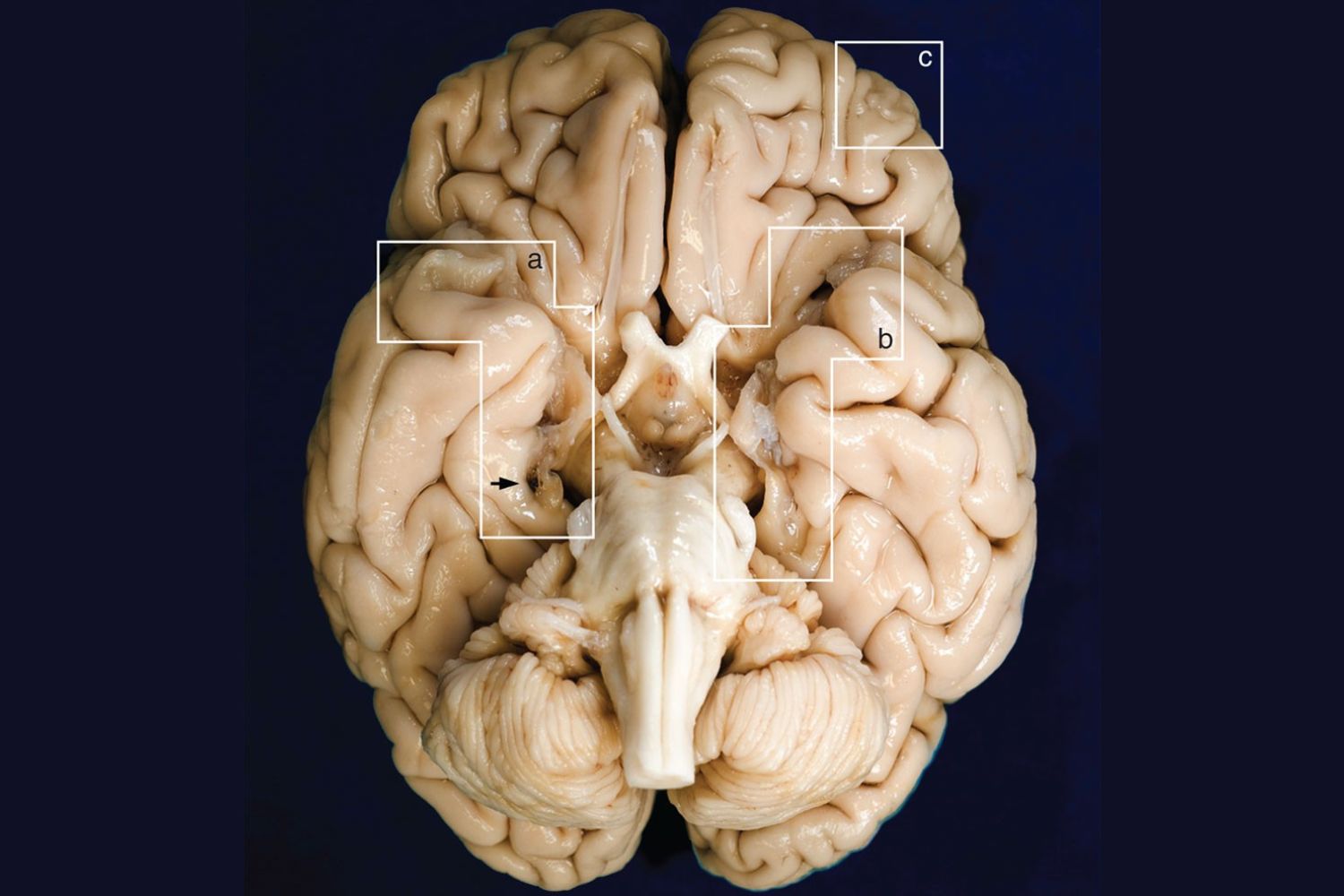
What is Sliding Uncus Syndrome? Sliding Uncus Syndrome is a rare neurological condition where part of the brain, specifically the uncus, shifts from its normal position. This shift can compress vital brain structures, leading to serious symptoms. Why should you care? Understanding this syndrome is crucial because it can cause severe headaches, vision problems, and even life-threatening complications if not treated promptly. How does it happen? Often, it results from increased intracranial pressure due to trauma, tumors, or other medical conditions. What can be done? Early diagnosis and treatment are key to managing symptoms and preventing further damage. Want to know more? Keep reading to uncover 30 essential facts about Sliding Uncus Syndrome.
Key Takeaways:
- Sliding Uncus Syndrome is a rare neurological condition where a part of the brain shifts, causing headaches, vision problems, and seizures. Treatment may involve surgery and medication to manage symptoms and improve quality of life.
- Understanding the symptoms, causes, and treatment of Sliding Uncus Syndrome is crucial for early detection and effective management. Support groups and follow-up care play a vital role in long-term recovery and well-being.
What is Sliding Uncus Syndrome?
Sliding Uncus Syndrome is a rare neurological condition involving the displacement of the uncus, a part of the brain's temporal lobe. This displacement can lead to various symptoms and complications, often requiring medical intervention.
- Rare Condition: Sliding Uncus Syndrome is extremely rare, with only a few documented cases worldwide.
- Temporal Lobe: The uncus is part of the temporal lobe, which plays a crucial role in processing sensory input and emotions.
- Displacement: In this syndrome, the uncus slides or shifts from its normal position, potentially compressing nearby brain structures.
- Symptoms: Symptoms can include headaches, vision problems, and seizures, depending on the extent of displacement.
- Diagnosis: MRI and CT scans are typically used to diagnose this condition, revealing the position of the uncus.
- Causes: Causes can vary but often include trauma, tumors, or brain swelling.
- Treatment: Treatment may involve surgery to correct the displacement and alleviate pressure on the brain.
- Prognosis: The prognosis depends on the underlying cause and the extent of the displacement.
Symptoms and Diagnosis
Understanding the symptoms and how Sliding Uncus Syndrome is diagnosed can help in early detection and treatment.
- Headaches: Persistent headaches are a common symptom due to increased intracranial pressure.
- Vision Problems: Vision issues, such as blurred or double vision, can occur if the optic nerve is compressed.
- Seizures: Seizures may develop as the displaced uncus affects electrical activity in the brain.
- Memory Loss: Memory problems can arise if the temporal lobe's function is compromised.
- Behavioral Changes: Changes in behavior or personality might be observed, linked to the temporal lobe's role in emotion regulation.
- MRI Scans: MRI scans provide detailed images of the brain, helping to identify the position of the uncus.
- CT Scans: CT scans can also be used, especially in emergency situations, to quickly assess brain structure.
- Neurological Exams: Comprehensive neurological exams are essential for assessing the extent of symptoms and planning treatment.
Causes and Risk Factors
Several factors can contribute to the development of Sliding Uncus Syndrome. Knowing these can aid in prevention and management.
- Trauma: Head injuries from accidents or falls can lead to the displacement of the uncus.
- Brain Tumors: Tumors in the temporal lobe can push the uncus out of place.
- Brain Swelling: Swelling due to infections or other conditions can cause the uncus to slide.
- Genetic Factors: In rare cases, genetic predispositions might play a role.
- Age: Older adults might be more susceptible due to age-related brain changes.
- Previous Surgeries: Prior brain surgeries can increase the risk of developing this syndrome.
- Infections: Severe brain infections like encephalitis can lead to swelling and displacement.
Treatment and Management
Effective treatment and management strategies are crucial for improving the quality of life for those affected by Sliding Uncus Syndrome.
- Surgical Intervention: Surgery is often required to reposition the uncus and relieve pressure.
- Medication: Medications can help manage symptoms like seizures and headaches.
- Rehabilitation: Post-surgery rehabilitation may include physical therapy and cognitive exercises.
- Monitoring: Regular monitoring through MRI or CT scans ensures the uncus remains in the correct position.
- Lifestyle Changes: Adopting a healthy lifestyle can aid in recovery and prevent complications.
- Support Groups: Joining support groups can provide emotional support and practical advice for patients and families.
- Follow-Up Care: Continuous follow-up with healthcare providers is essential for managing long-term outcomes.
Final Thoughts on Sliding Uncus Syndrome
Sliding Uncus Syndrome, though rare, demands attention due to its serious implications. This condition involves the displacement of brain tissue, often leading to severe neurological symptoms. Early diagnosis and prompt treatment are crucial for better outcomes. Understanding the signs, such as sudden headaches, vision changes, or seizures, can make a significant difference. Medical professionals use imaging techniques like MRI and CT scans to identify the issue accurately. Treatment options range from medication to surgery, depending on the severity. Awareness and education about this syndrome can help in managing and potentially preventing complications. Stay informed, and don't hesitate to seek medical advice if you notice any concerning symptoms. Your health is paramount, and knowing more about conditions like Sliding Uncus Syndrome can empower you to take proactive steps.
Frequently Asked Questions
Was this page helpful?
Our commitment to delivering trustworthy and engaging content is at the heart of what we do. Each fact on our site is contributed by real users like you, bringing a wealth of diverse insights and information. To ensure the highest standards of accuracy and reliability, our dedicated editors meticulously review each submission. This process guarantees that the facts we share are not only fascinating but also credible. Trust in our commitment to quality and authenticity as you explore and learn with us.
